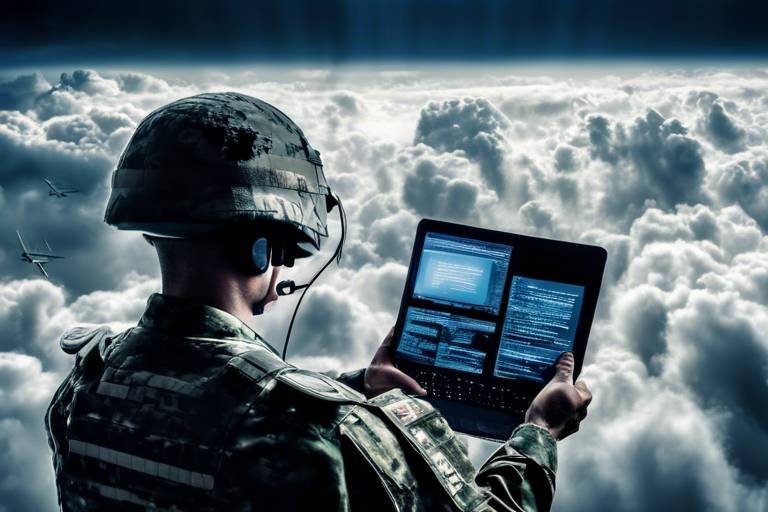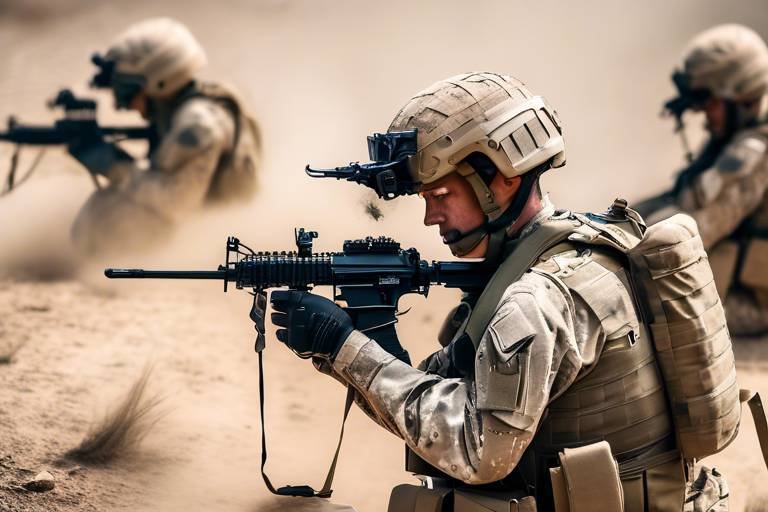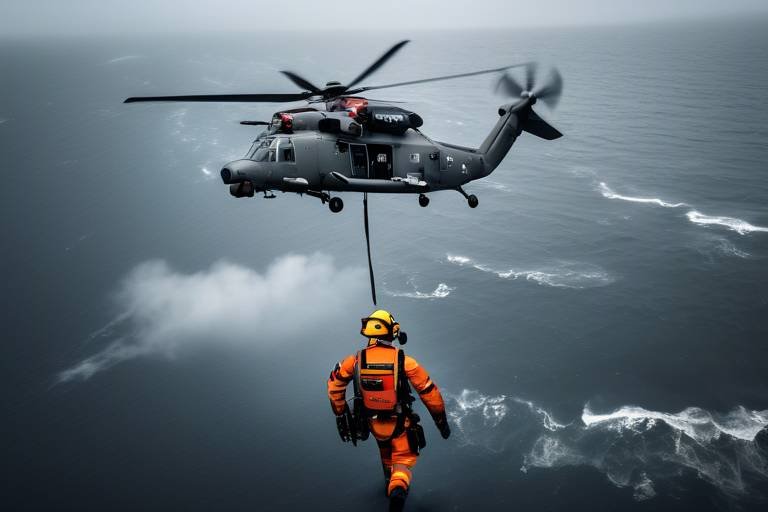Exploring the Future of Military Robotics
The landscape of warfare is constantly evolving, and at the forefront of this transformation is the world of military robotics. As we stand on the brink of a new era, the integration of advanced robotic systems into military operations is not just a possibility; it is a reality that is reshaping how nations defend themselves and engage in combat. Imagine a battlefield where drones buzz overhead, ground robots navigate treacherous terrains, and artificial intelligence (AI) systems analyze data in real-time. This is not science fiction; this is the present and future of military robotics.
As we dive deeper into the implications of these technologies, it’s essential to recognize that the advancements in military robotics are not merely about enhancing combat capabilities. They also encompass a myriad of factors including operational efficiency, troop safety, and even ethical considerations that challenge our moral compass. With every technological leap, we must ask ourselves: Are we ready for the consequences that come with deploying these machines in warfare?
Throughout this article, we will explore the evolution of military robotics, current applications in warfare, and the ethical dilemmas that arise from their use. We will also take a peek into the future, speculating on how emerging technologies like AI and machine learning could further influence military strategies. Buckle up as we embark on this fascinating journey into the world of military robotics, where innovation meets the complexities of human judgment and ethical responsibility.
To understand where we are headed, it’s crucial to look back at how military robotics have evolved over the years. From the rudimentary remote-controlled devices of the early 20th century to today's sophisticated autonomous systems, the journey has been nothing short of remarkable. Major milestones in this evolution include:
- World War II: The use of early drones for reconnaissance.
- Cold War: Development of robotic systems for surveillance and intelligence gathering.
- 21st Century: The rise of UAVs and ground robots in combat zones.
Each of these milestones has contributed to the capabilities we see in modern military applications, where robotics play a critical role in enhancing both offensive and defensive strategies.
Today, military robotics are utilized in various forms, each designed to fulfill specific roles on the battlefield. The most prominent examples include Unmanned Aerial Vehicles (UAVs) and ground robots. These technologies not only enhance operational efficiency but also significantly increase the safety of human personnel.
UAVs have become a game-changer in modern warfare. These versatile machines are employed for reconnaissance, surveillance, and even targeted strikes. Their ability to gather intelligence from high altitudes without risking human lives has made them indispensable in military operations. However, their deployment is not without challenges. Issues such as regulatory hurdles, cybersecurity threats, and ethical concerns about their use in targeted killings remain hotly debated.
The benefits of UAVs are numerous:
- Reduced Risk: They minimize the risk to human lives by taking pilots out of dangerous situations.
- Increased Range: UAVs can operate over vast areas, providing real-time data from locations that might be inaccessible to ground troops.
- Enhanced Data Collection: Equipped with advanced sensors, UAVs can collect a wealth of information that can be analyzed to inform strategic decisions.
Despite their advantages, UAVs face significant challenges:
- Regulatory Issues: The use of drones is often restricted by national and international laws.
- Cybersecurity Threats: UAVs can be vulnerable to hacking, which poses a risk to sensitive operations.
- Ethical Concerns: The use of drones for targeted killings raises questions about accountability and the moral implications of remote warfare.
Ground robots are another critical component of military robotics, utilized for logistics, bomb disposal, and reconnaissance missions. These machines can navigate hazardous environments, performing tasks that would be too dangerous for human soldiers. Their deployment not only enhances troop safety but also increases the chances of mission success.
As we integrate more robotics into military operations, we must grapple with the ethical implications of these technologies. The prospect of autonomous systems making life-and-death decisions raises profound questions about accountability and moral responsibility.
The debate over autonomy versus human control is ongoing. While autonomous systems can operate independently, the risks associated with allowing machines to make critical decisions in combat situations are significant. The potential for malfunction, misinterpretation of data, or ethical lapses could have dire consequences.
Looking ahead, the future of military robotics is poised to be shaped by emerging technologies such as artificial intelligence and machine learning. These advancements promise to enhance decision-making, adaptability, and efficiency on the battlefield.
Integrating AI into military robotics will revolutionize how decisions are made in combat. AI can analyze vast amounts of data quickly, allowing for more informed strategic choices. However, this also raises questions about the extent to which we should rely on machines for critical decisions.
Envisioning future scenarios involving advanced military robotics leads to considerations of global security, warfare tactics, and international relations. As nations invest in these technologies, the balance of power may shift, leading to new forms of conflict and cooperation.
- What are military robots used for? Military robots are used for various applications, including reconnaissance, surveillance, logistics, and bomb disposal.
- Are UAVs safe to use? While UAVs reduce risks to human lives, they present challenges such as cybersecurity threats and ethical concerns.
- What is the future of military robotics? The future will likely involve greater integration of AI and machine learning, transforming how military operations are conducted.
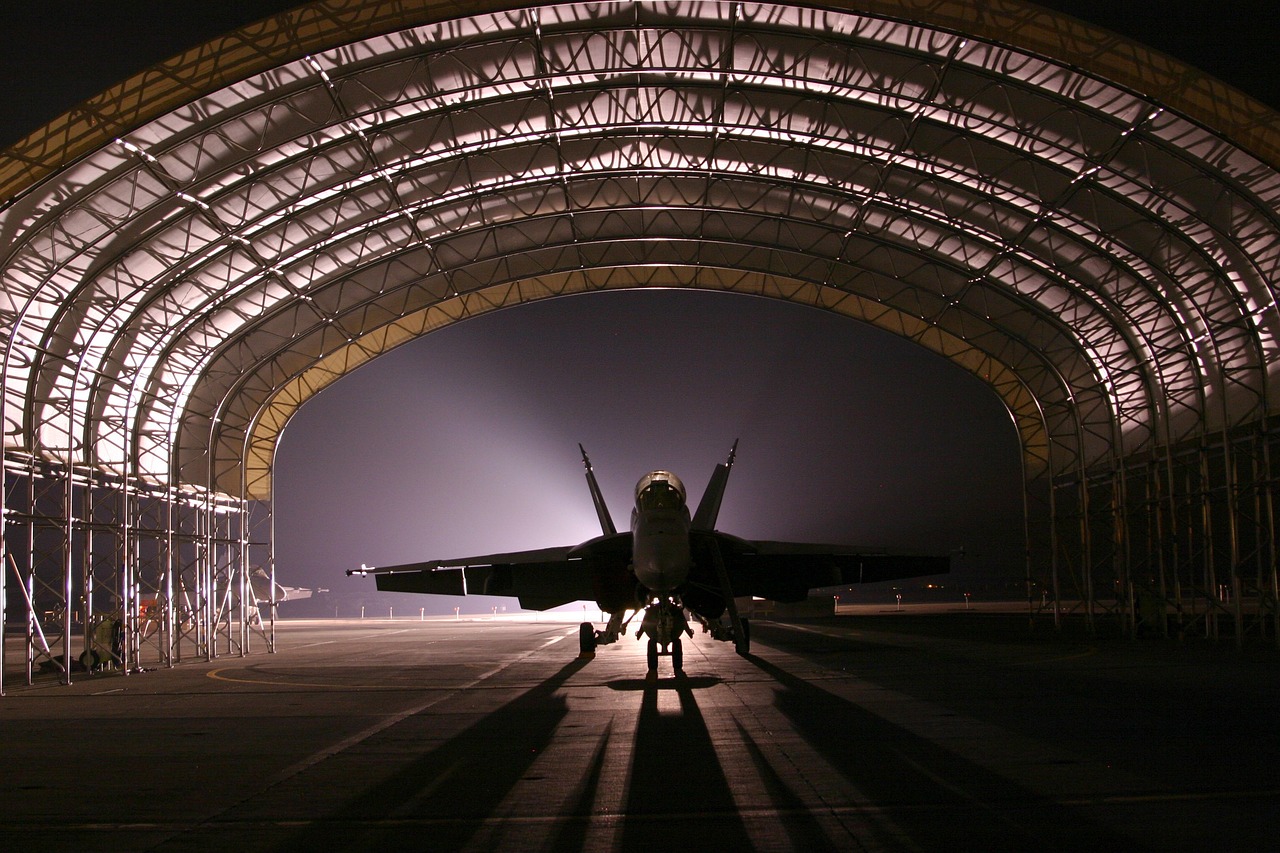
The Evolution of Military Robotics
When we think about military robotics, it's easy to assume that these technologies are a modern phenomenon, born from the advancements of the 21st century. However, the roots of military robotics stretch back several decades, with a fascinating evolution that has been shaped by both technological advancements and the changing nature of warfare. From the early days of rudimentary robotic systems to today’s sophisticated unmanned vehicles, the journey of military robotics is a testament to human ingenuity and the relentless quest for efficiency and safety in combat.
The early stages of military robotics can be traced back to World War II, when the concept of using remote-controlled devices began to emerge. One notable example was the development of the Radioplane OQ-2, an early drone created by inventor Howard Hughes. This drone was primarily used for target practice, but it laid the groundwork for future developments in unmanned aerial systems. Fast forward to the late 20th century, and we see significant advancements in robotics technology, which began to take a more prominent role in military operations.
In the 1990s, the introduction of unmanned aerial vehicles (UAVs) marked a significant turning point. The MQ-1 Predator became one of the first UAVs to be used extensively in combat, primarily for reconnaissance missions. This period also saw the rise of ground-based robotic systems, such as the PackBot, which was designed for bomb disposal and reconnaissance in hazardous environments. These early systems demonstrated the potential of robotics to enhance military capabilities while reducing the risk to human soldiers.
As we moved into the 21st century, military robotics continued to evolve rapidly, driven by advancements in artificial intelligence, machine learning, and sensor technology. Today's military robots are not just remote-controlled devices; they are increasingly autonomous, capable of performing complex tasks with minimal human intervention. This shift has led to a new era in military strategy, where robots are integrated into various aspects of warfare, from logistics and supply chain management to combat operations.
To better understand this evolution, consider the following table that outlines key milestones in the development of military robotics:
| Year | Milestone | Description |
|---|---|---|
| 1940s | Radioplane OQ-2 | One of the first drones used for military training. |
| 1990s | MQ-1 Predator | First UAV used for reconnaissance and targeted strikes. |
| 2000s | PackBot | Ground robot used for bomb disposal and reconnaissance. |
| 2010s | Autonomous Systems | Development of robots capable of independent operation in combat. |
This historical perspective highlights not only the rapid advancements in technology but also the evolving strategies in military operations. As we continue to explore the capabilities of military robotics, it becomes evident that these technologies are not just tools; they are reshaping the very fabric of warfare, influencing tactics, and altering the balance of power on the battlefield.
- What are military robots used for? Military robots are used for various applications, including surveillance, reconnaissance, logistics, bomb disposal, and combat operations.
- How have military robots evolved over time? Military robots have evolved from simple remote-controlled devices to complex autonomous systems capable of performing a wide range of tasks in various combat scenarios.
- What are the ethical concerns surrounding military robotics? Ethical concerns include accountability for decisions made by autonomous systems, the potential for misuse, and the implications of reducing human involvement in life-and-death situations.
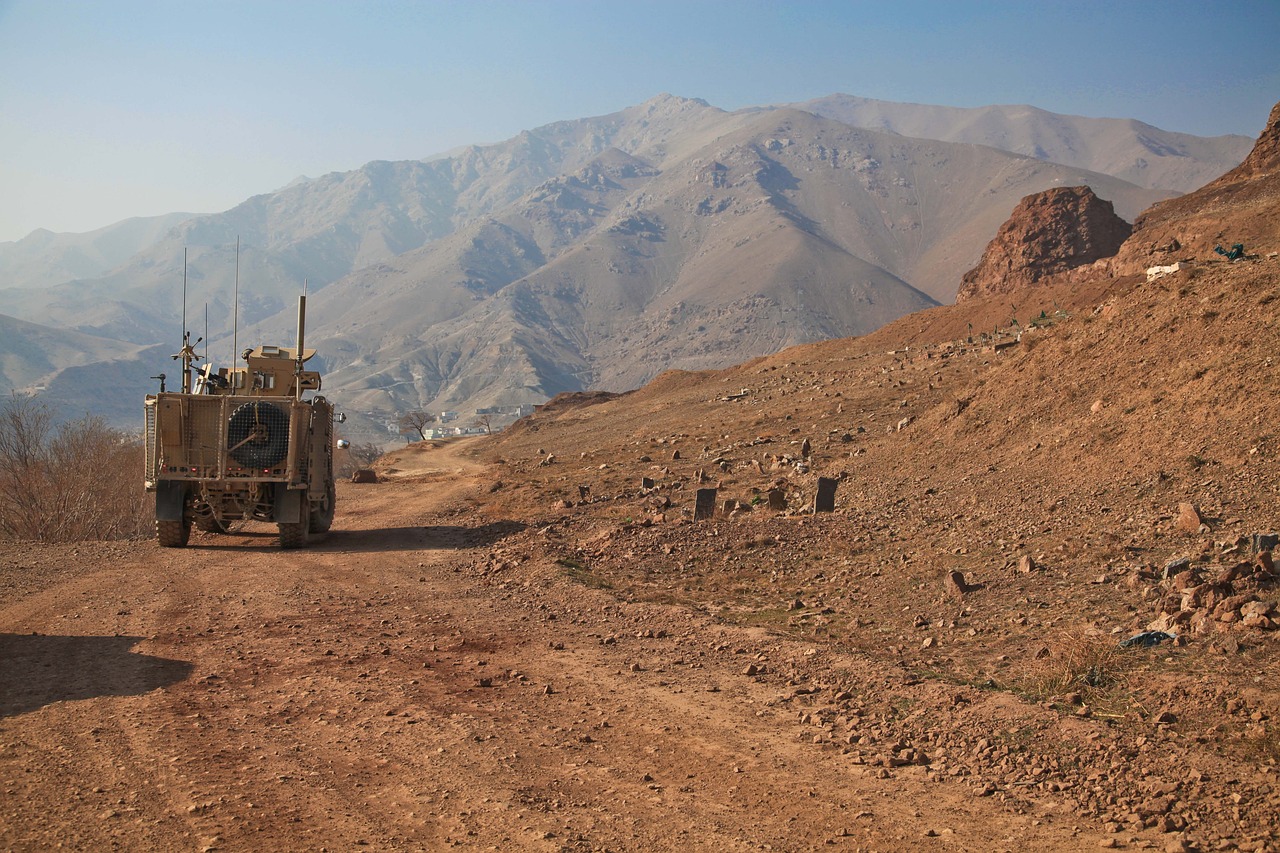
Current Applications in Warfare
The landscape of warfare has undergone a radical transformation in recent years, largely due to the integration of military robotics. These advanced technologies are not just futuristic concepts; they are actively reshaping how military operations are conducted on the battlefield. From unmanned aerial vehicles (UAVs) soaring through the skies to ground robots meticulously navigating treacherous terrains, military robotics enhance operational efficiency while prioritizing safety. Imagine a scenario where soldiers are freed from the most dangerous tasks, allowing them to focus on strategy and decision-making. This is not just a dream; it is the reality we are moving towards.
One of the most prominent applications of military robotics is in the realm of unmanned aerial vehicles (UAVs). These flying machines are employed for a variety of missions, including reconnaissance, surveillance, and even targeted strikes. UAVs provide a bird's-eye view of the battlefield, enabling military commanders to gather critical intelligence without risking human lives. Their ability to operate in hostile environments makes them invaluable assets. For instance, during the recent conflicts, UAVs have been utilized to monitor enemy movements and gather data that informs tactical decisions. However, the reliance on these technologies also raises questions about their limitations and ethical implications.
On the ground, robotics also play a crucial role. Ground robots are deployed for various purposes, including logistics support, bomb disposal, and reconnaissance missions. These machines are designed to handle tasks that would be perilous for human soldiers. For example, bomb disposal robots can safely defuse explosives, significantly reducing the risk to personnel. Moreover, they can transport supplies and equipment to remote locations, ensuring that troops have the resources they need without exposing them to unnecessary danger. The integration of ground robots into military operations not only enhances safety but also increases the likelihood of mission success.
To illustrate the diversity of military robotics applications, consider the following table that outlines the various types of military robots and their functions:
| Type of Robot | Function |
|---|---|
| Unmanned Aerial Vehicles (UAVs) | Reconnaissance, surveillance, targeted strikes |
| Ground Robots | Logistics, bomb disposal, reconnaissance |
| Maritime Drones | Surveillance, anti-submarine warfare |
| Autonomous Ground Vehicles | Transporting troops and supplies |
While the advantages of military robotics are clear, it is essential to recognize the challenges that accompany their deployment. Issues such as regulatory hurdles, cybersecurity threats, and ethical dilemmas regarding their use in combat scenarios cannot be overlooked. The military must navigate these complexities to ensure that the technology is used responsibly and effectively.
In conclusion, the current applications of military robotics are revolutionizing modern warfare. By enhancing operational efficiency and ensuring troop safety, these technologies are setting the stage for a new era of military strategy. As we continue to explore the potential of robotics in warfare, it is crucial to remain vigilant about the ethical implications and challenges that arise from their use.
- What are the main types of military robots currently in use? Military robots include unmanned aerial vehicles (UAVs), ground robots, maritime drones, and autonomous ground vehicles.
- How do UAVs enhance military operations? UAVs provide real-time intelligence, conduct surveillance, and can carry out targeted strikes without risking human lives.
- What are the ethical concerns surrounding military robotics? Ethical concerns include accountability for actions taken by robots, the potential for autonomous systems to make life-and-death decisions, and the implications of using robots in combat situations.
- What challenges do military robots face? Challenges include regulatory issues, cybersecurity threats, and the need for human oversight to ensure responsible use.
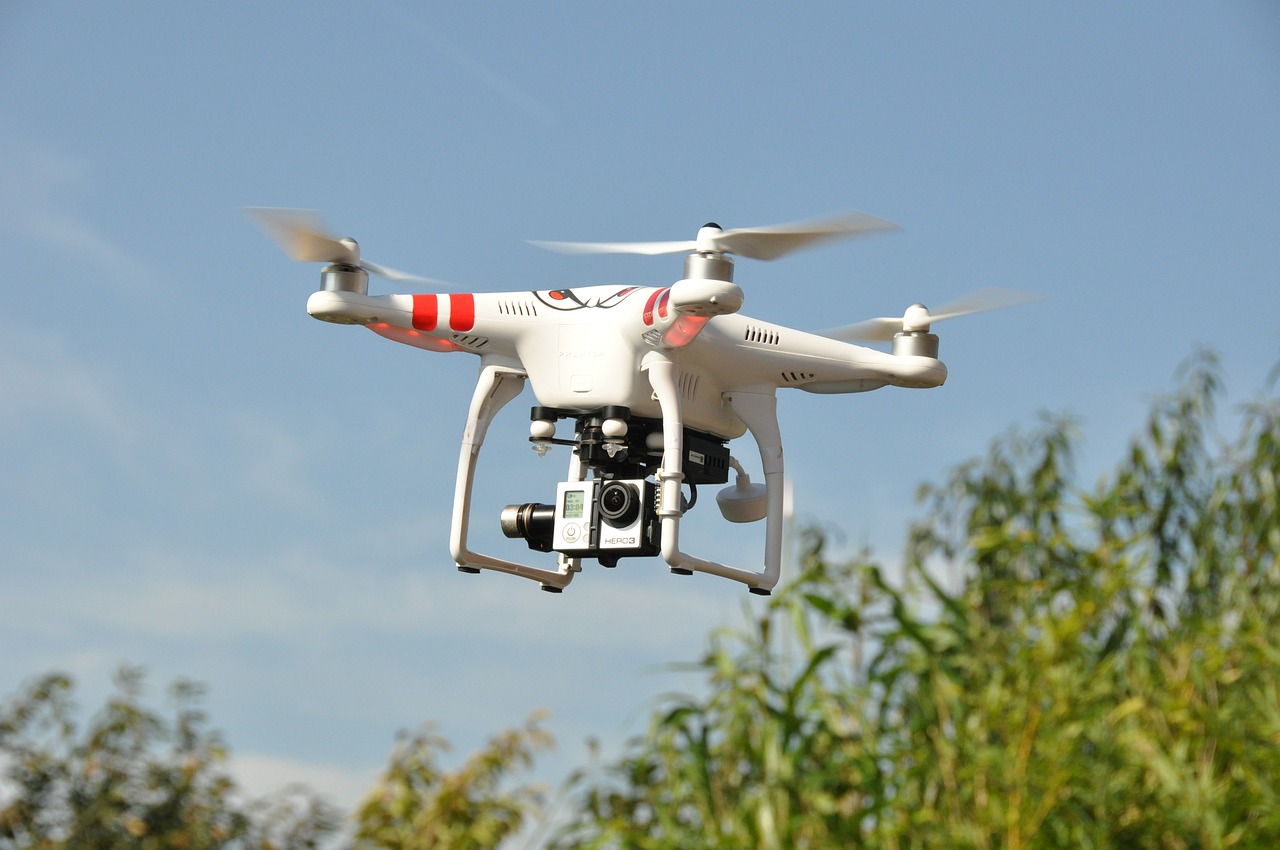
Unmanned Aerial Vehicles (UAVs)
Unmanned Aerial Vehicles, commonly known as UAVs or drones, have revolutionized the landscape of modern warfare. These remarkable machines operate without a human pilot on board, utilizing advanced technology to perform a variety of military tasks. The evolution of UAVs has been nothing short of explosive, transforming how military operations are conducted and redefining the concept of aerial combat. Imagine a world where soldiers can stay safely on the ground while their eyes in the sky gather crucial intelligence; that’s the power UAVs bring to the table.
UAVs serve multiple purposes in contemporary military operations, including reconnaissance, surveillance, and targeted strikes. Their ability to fly at high altitudes and cover vast distances allows them to collect real-time data and relay it back to command centers. This capability not only enhances situational awareness but also enables military leaders to make informed decisions on the battlefield. However, while UAVs are equipped with sophisticated sensors and cameras, they are not without limitations.
One of the most significant advantages of UAVs is their ability to reduce risk to human lives. By deploying drones for missions that would otherwise put pilots in harm's way, military forces can conduct operations with a greater degree of safety. For instance, UAVs can be sent into hostile environments to gather intelligence or conduct airstrikes, allowing human operators to remain out of danger. Additionally, their increased operational range means that they can be deployed in areas that are difficult for manned aircraft to reach, providing a tactical edge.
However, the deployment of UAVs is not without its challenges. Regulatory issues, such as airspace restrictions and international laws governing drone warfare, create a complex operational environment. Furthermore, UAVs are vulnerable to cybersecurity threats, as their reliance on data links and communication systems makes them potential targets for hacking or jamming. Ethical concerns regarding the use of UAVs in warfare also loom large, particularly when it comes to the implications of targeted strikes and the potential for civilian casualties.
In summary, while Unmanned Aerial Vehicles have transformed military operations and brought about numerous advantages, they also present a host of challenges that must be addressed. As technology continues to evolve, the role of UAVs in future conflicts will likely expand, making it crucial for military strategists, lawmakers, and society as a whole to engage in ongoing discussions about their use and regulation.
- What are UAVs used for in the military? UAVs are primarily used for reconnaissance, surveillance, and targeted strikes, allowing military forces to gather intelligence and conduct operations without putting human lives at risk.
- How do UAVs enhance operational efficiency? By providing real-time data and reducing the need for manned missions, UAVs allow for quicker decision-making and safer operations in hostile environments.
- What are the ethical concerns surrounding UAV use? Ethical concerns include the potential for civilian casualties during targeted strikes, accountability for decisions made by UAVs, and the implications of autonomous systems in warfare.

Advantages of UAVs
Unmanned Aerial Vehicles (UAVs) have revolutionized modern warfare, offering a plethora of advantages that traditional manned aircraft simply cannot match. First and foremost, one of the most significant benefits of UAVs is the reduced risk to human lives. By utilizing drones for missions that would otherwise put pilots in harm's way, military forces can conduct operations in hostile environments without endangering personnel. Imagine sending a robot into a dangerous situation while keeping your soldiers safe—it's like sending a scout ahead while you wait in a secure location.
Moreover, UAVs provide an increased operational range. Unlike manned aircraft, which have limitations based on fuel and pilot endurance, drones can fly for extended periods, conducting surveillance and reconnaissance over vast areas. This capability allows military strategists to gather real-time intelligence from locations that would be challenging or impossible to access otherwise. For example, a UAV can hover over enemy territory for hours, feeding back critical information without the need for immediate extraction.
Another compelling advantage of UAVs is their enhanced data collection capabilities. Equipped with advanced sensors and cameras, these drones can capture high-resolution imagery, thermal data, and even electronic signals. This wealth of information can be used for various purposes, from mapping terrain to identifying enemy movements. The ability to process and analyze data in real-time gives military commanders a significant edge in decision-making. Think of it as having a pair of eyes in the sky that never tire—always watching, always reporting.
In addition to these points, UAVs also contribute to cost-effectiveness. Operating a drone is generally less expensive than maintaining a fleet of manned aircraft. The costs associated with training pilots, fuel, and aircraft maintenance can add up quickly. In contrast, UAVs can be deployed at a fraction of the cost, allowing military budgets to stretch further. This financial efficiency can enable armed forces to invest more in other critical areas, such as technology development and troop support.
Lastly, UAVs can enhance mission versatility. They can be adapted for a wide range of tasks, from surveillance and reconnaissance to cargo delivery and even combat operations. This multi-role capability means that a single type of UAV can serve various functions, simplifying logistics and streamlining operations. For instance, a drone initially designed for surveillance can be modified to carry payloads for supply missions, showcasing its flexibility in the field.
In summary, the advantages of UAVs are numerous and impactful. They offer a combination of safety, efficiency, and versatility that is transforming the battlefield. As technology continues to evolve, the role of UAVs in military operations is likely to expand even further, making them an indispensable asset for modern defense strategies.
- What are UAVs primarily used for in military operations?
UAVs are primarily used for reconnaissance, surveillance, targeted strikes, and logistics support, allowing for safer and more efficient operations. - How do UAVs reduce risks to military personnel?
By conducting missions remotely, UAVs keep pilots and soldiers out of harm's way, allowing for operations in dangerous environments without risking lives. - What types of data can UAVs collect?
UAVs can collect high-resolution imagery, thermal data, and electronic signals, providing valuable intelligence for military operations. - Are UAVs cost-effective compared to manned aircraft?
Yes, UAVs are generally less expensive to operate, which allows military forces to allocate resources more efficiently.

Challenges Faced by UAVs
While Unmanned Aerial Vehicles (UAVs) have revolutionized modern warfare, they come with a unique set of challenges that can complicate their deployment and effectiveness. One of the most pressing issues is the regulatory landscape. Different countries have varying laws regarding the use of UAVs, which can hinder operations, especially in multinational missions. For instance, what happens when a UAV crosses into a country’s airspace without permission? The potential for diplomatic incidents is high, and navigating these legal waters requires careful consideration and planning.
Moreover, the cybersecurity threats associated with UAVs cannot be overlooked. As these drones become more advanced, they also become more attractive targets for hackers. Imagine a scenario where an enemy successfully takes control of a UAV, turning it against its operators. This risk raises critical questions about the security protocols in place. Are they robust enough to prevent unauthorized access? What measures can be implemented to counteract potential cyber attacks?
Another significant challenge pertains to the ethical implications of using UAVs in combat. The very nature of remote warfare can desensitize operators to the realities of conflict. When a pilot is thousands of miles away, controlling a drone via a screen, the line between video game and real-life consequences can blur. This detachment raises moral questions about accountability. If a UAV makes a mistake, who is responsible? Is it the operator, the manufacturer, or the military as a whole? These questions demand serious contemplation as military strategies evolve.
Furthermore, UAVs often face technical limitations. Despite advancements, they can still be vulnerable to various environmental factors, such as extreme weather conditions, which can hinder their performance. For instance, strong winds or heavy rain can impact their flying capabilities, potentially putting missions at risk. Additionally, limitations in battery life can restrict their operational range, necessitating frequent returns for recharging or refueling, which can disrupt mission timelines.
Lastly, the public perception of UAVs plays a significant role in their acceptance and deployment. Incidents involving drone strikes that result in civilian casualties can lead to backlash against military operations, influencing public opinion and policy decisions. The challenge lies in balancing the strategic advantages of UAVs with the moral obligation to avoid unnecessary harm to non-combatants.
- What are the main challenges faced by UAVs in military operations?
The main challenges include regulatory issues, cybersecurity threats, ethical implications, technical limitations, and public perception.
- How do regulatory issues impact UAV operations?
Different countries have varying laws regarding UAV usage, which can complicate operations, especially in multinational missions.
- What ethical concerns are associated with UAVs?
The detachment of operators from the battlefield can create moral dilemmas regarding accountability for actions taken by UAVs.
- Can UAVs be hacked?
Yes, UAVs can be vulnerable to hacking, which poses significant cybersecurity risks for military operations.
- What technical limitations do UAVs have?
UAVs can be affected by environmental factors and have limitations in battery life, which can restrict their operational range.
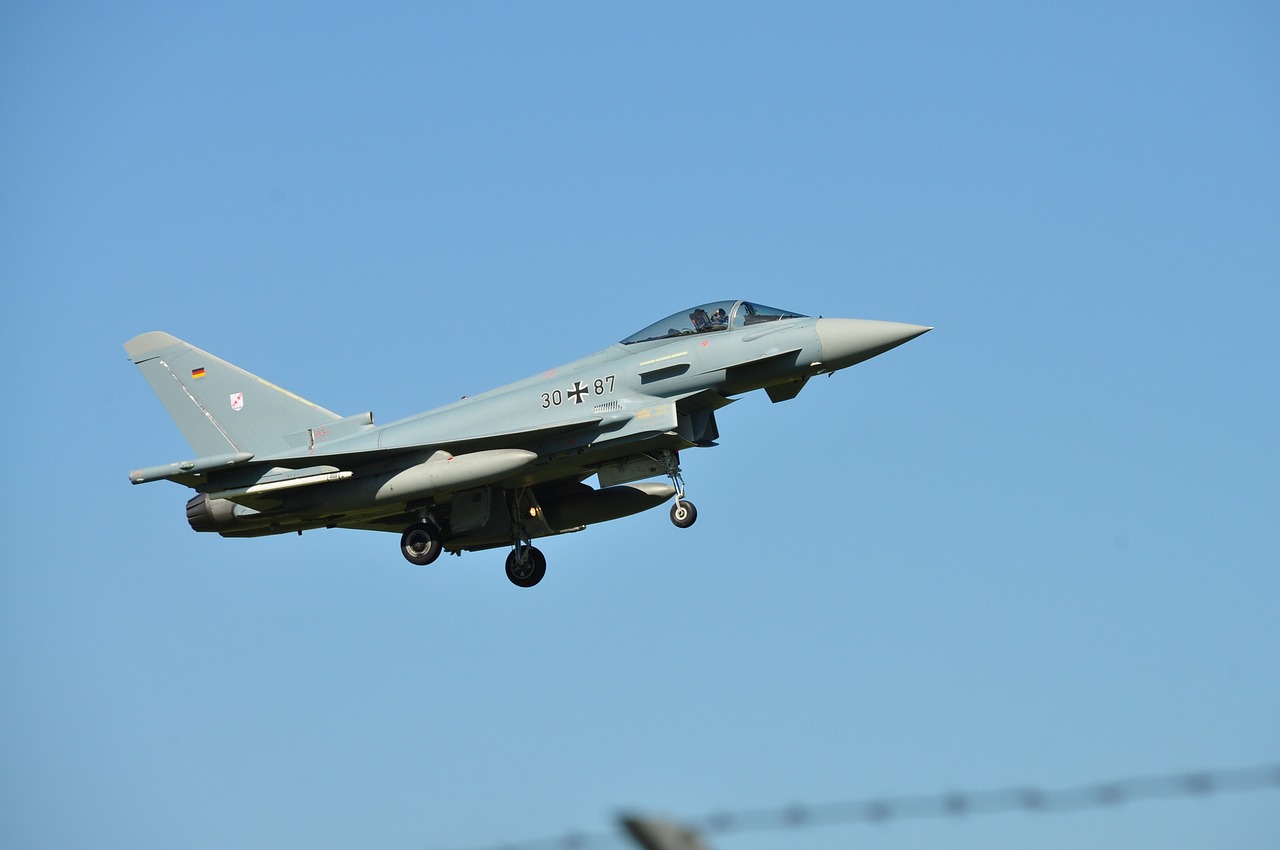
Ground Robotics
Ground robotics have become a vital component of modern military operations, revolutionizing the way armed forces conduct their missions. These machines, designed to operate on the ground, are not just tools; they are force multipliers that enhance the safety and effectiveness of troops in various high-stakes situations. Imagine sending a robot into a dangerous area to perform reconnaissance or handle explosive devices, allowing soldiers to stay at a safe distance. This is not science fiction; it’s the reality of how ground robotics are reshaping warfare.
One of the most significant advantages of ground robots is their ability to perform tasks that are either too dangerous or too tedious for human soldiers. For instance, in bomb disposal scenarios, these robots can approach suspicious packages, assess the situation, and even neutralize threats without putting human lives at risk. In logistics, ground robots can transport supplies across difficult terrains, ensuring that troops receive the necessary equipment without exposing them to enemy fire.
Moreover, ground robotics can be equipped with various sensors and cameras, allowing them to gather real-time intelligence. This capability enhances situational awareness on the battlefield, enabling commanders to make informed decisions quickly. For example, a ground robot equipped with thermal imaging can detect enemy movements even in low visibility conditions, providing a tactical advantage.
However, the implementation of ground robotics does come with its own set of challenges. One of the primary concerns is the reliability of these machines in unpredictable environments. Ground robots must navigate rough terrains, avoid obstacles, and sometimes operate in adverse weather conditions. This requires sophisticated algorithms and robust engineering to ensure they can perform their tasks effectively. Additionally, there is the issue of cybersecurity. As these robots become more connected, they also become more vulnerable to hacking and other cyber threats, which could compromise missions.
To illustrate the impact of ground robotics on military operations, consider the following table that summarizes their key applications:
| Application | Description | Benefits |
|---|---|---|
| Reconnaissance | Gathering intelligence in hostile areas. | Increased safety for troops and enhanced situational awareness. |
| Bomb Disposal | Neutralizing explosives from a safe distance. | Reduces risk to human life and increases mission success rates. |
| Logistics Support | Transporting supplies to frontline troops. | Ensures timely delivery of essential equipment without exposing soldiers to danger. |
In conclusion, ground robotics are not merely an enhancement to military capabilities; they represent a paradigm shift in how modern warfare is conducted. As technology continues to evolve, the role of these robots is likely to expand, further integrating into various military strategies. The potential for improved safety, efficiency, and operational effectiveness makes ground robotics an exciting area of development in the defense sector.
- What are ground robots used for in the military? Ground robots are used for reconnaissance, bomb disposal, and logistics support, among other applications.
- How do ground robots enhance troop safety? By performing dangerous tasks, ground robots allow soldiers to stay at a safe distance from threats.
- What challenges do ground robots face? They must navigate unpredictable environments and are vulnerable to cyber threats.
- Will ground robotics replace human soldiers? While they enhance capabilities, ground robots are designed to support, not replace, human soldiers.

Ethical Considerations in Military Robotics
The rise of military robotics has ushered in a new era of warfare that brings with it a host of ethical considerations. As nations increasingly turn to autonomous systems to engage in combat, the implications of these technologies challenge our traditional understanding of warfare, morality, and accountability. Can we truly delegate life-and-death decisions to machines? This question looms large as we explore the complex landscape of military robotics.
One of the primary ethical concerns revolves around accountability. When a drone or autonomous robot makes a decision that results in civilian casualties, who is held responsible? The operator, the programmer, or the military as a whole? The ambiguity surrounding accountability can lead to a troubling environment where actions are taken without clear repercussions. This issue is further complicated by the potential for malfunction or unintended consequences, which raises questions about how much trust we can place in these machines.
Another significant consideration is the decision-making process of autonomous systems. Unlike human soldiers, robots operate based on algorithms and data inputs, which may not always account for the nuances of human emotions or the unpredictable nature of combat. Imagine a scenario where a robot must choose between two targets, one being a military asset and the other a group of civilians. How can a machine weigh the moral implications of such a choice? This dilemma highlights the limitations of programming in capturing the complexities of human ethics, leading to potential moral failures on the battlefield.
Moreover, the deployment of military robotics raises profound questions about human oversight. The debate between autonomy and human control is ongoing, with some advocating for fully autonomous systems that can operate independently, while others argue for maintaining human involvement in critical decisions. The fear is that as we grant more autonomy to machines, we might inadvertently create a scenario where robots operate without sufficient ethical constraints, leading to a future where warfare becomes increasingly detached from human values.
To further illustrate these concerns, let's look at a comparison of autonomous systems versus human-controlled operations in military contexts:
| Aspect | Autonomous Systems | Human-Controlled Operations |
|---|---|---|
| Accountability | Ambiguous; difficult to assign blame | Clear; identifiable operators |
| Decision-Making | Data-driven; lacks emotional context | Emotionally aware; considers ethical implications |
| Operational Speed | Faster; can process data rapidly | Slower; requires human deliberation |
| Risk to Human Life | Reduces risk to soldiers | Involves direct human risk |
As we venture into the future of military robotics, we must grapple with these ethical dilemmas. The integration of machines into warfare not only alters how battles are fought but also how we view the very nature of conflict itself. Will we see a shift towards a more dehumanized form of warfare, where machines dictate the course of action? Or can we find a balance that allows for the advantages of robotics while still preserving the moral foundations of military engagement?
Ultimately, the ethical considerations surrounding military robotics are complex and multifaceted. As technology continues to advance, it is crucial that we engage in ongoing discussions about the implications of these systems. We must ensure that our approach to military robotics prioritizes accountability, ethical decision-making, and human oversight, so that we do not lose sight of what it means to be human in the face of rapid technological change.
- What are the main ethical concerns regarding military robotics? The primary concerns include accountability for actions taken by robots, the decision-making processes they employ, and the level of human oversight required.
- Can autonomous systems operate ethically in warfare? While autonomous systems can process data quickly, they lack the emotional and ethical considerations that human soldiers possess, raising questions about their ability to make moral decisions.
- Who is responsible if a military robot causes civilian casualties? This remains a contentious issue, as accountability can be ambiguous, involving operators, programmers, and military organizations.
- How can we ensure ethical use of military robotics? Ongoing discussions, regulations, and frameworks must be established to guide the development and deployment of military robotics, emphasizing accountability and ethical considerations.
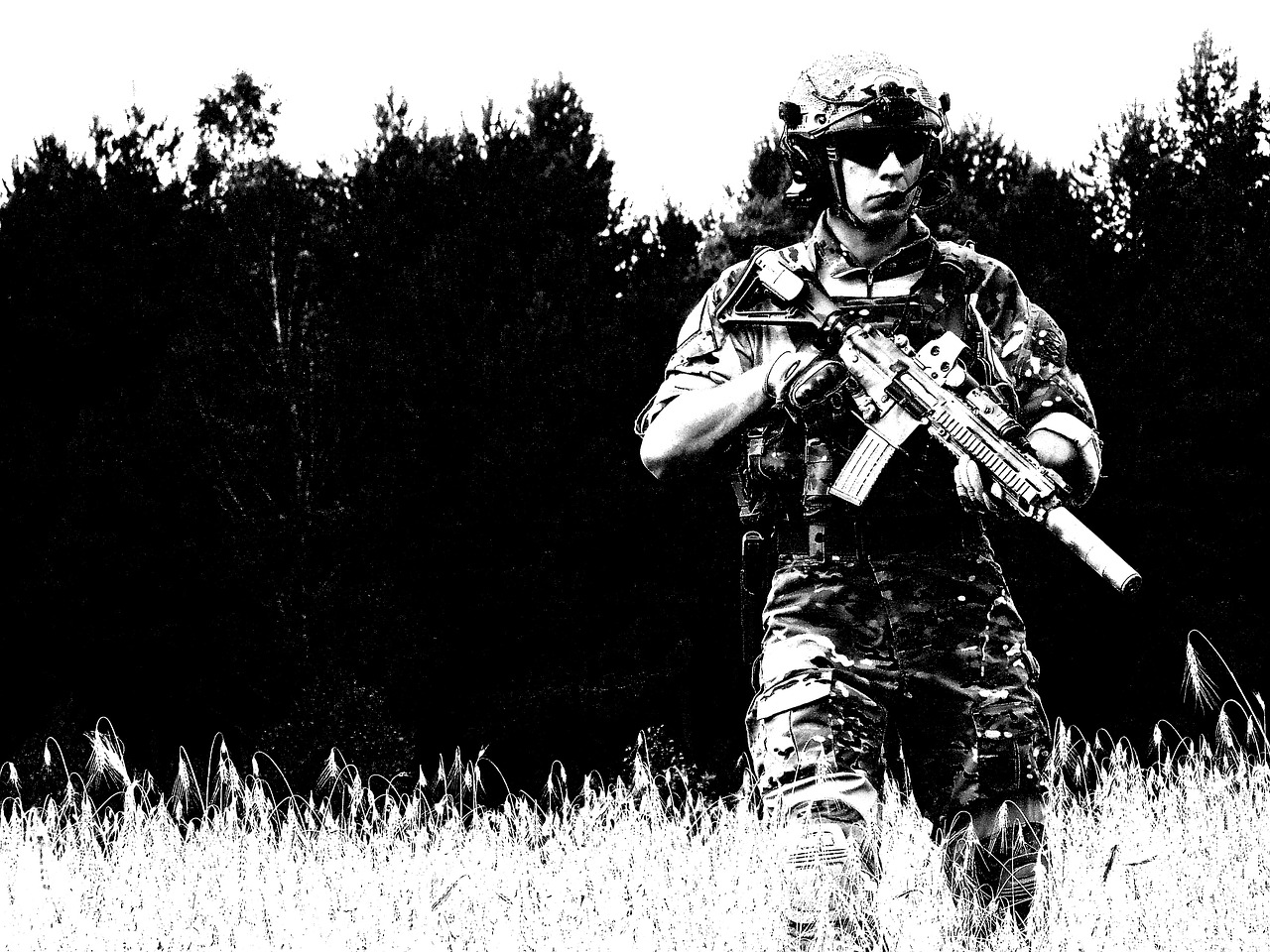
Autonomy vs. Human Control
The debate surrounding autonomy in military robotics is one that stirs up strong emotions and varied opinions. On one hand, proponents of autonomous systems argue that these robots can make faster decisions than humans, especially in high-stakes environments where every second counts. Imagine a scenario where a drone must decide whether to engage a target or retreat; an autonomous system could analyze data and make that decision in a fraction of the time it would take a human operator. This speed can potentially enhance mission success rates and reduce casualties.
However, the flip side of this argument raises significant concerns. Human oversight in military operations has been a cornerstone of ethical warfare. The idea of allowing machines to make life-and-death decisions is unsettling for many. What if a robot misinterprets data and targets the wrong entity? The consequences could be catastrophic, not just for the immediate victims but also for international relations and military reputation. The challenge lies in finding a balance between leveraging the efficiency of autonomous systems while ensuring that human judgment remains a critical component of warfare.
Furthermore, the complexity of warfare does not lend itself easily to automated decision-making. The unpredictable nature of combat—where emotions, morale, and on-the-ground realities play vital roles—can be difficult to quantify. For example, a soldier may choose to spare a civilian life based on instinct or a gut feeling, something an algorithm may not be able to process. This brings us to the heart of the matter: should we trust machines to interpret the nuances of human life?
To illustrate the ongoing tension between autonomy and human control, consider the following table that outlines the key advantages and disadvantages of each approach:
| Aspect | Autonomous Systems | Human Control |
|---|---|---|
| Speed of Decision-Making | High | Moderate |
| Emotional Intelligence | Low | High |
| Risk of Errors | Potentially High | Lower, but human error can occur |
| Accountability | Challenging to assign | Clear |
As we look ahead, the integration of autonomous systems in military operations will likely continue to grow, but the need for human oversight will remain paramount. The future of military robotics could very well hinge on our ability to blend the speed and efficiency of machines with the moral and ethical considerations that only humans can provide. This ongoing dialogue will shape the policies and practices surrounding military robotics, ensuring that while we embrace innovation, we do not lose sight of the fundamental values that guide our actions.
- What are the main advantages of using autonomous military robots? Autonomous robots can process information and make decisions quickly, potentially increasing operational efficiency and reducing risks to human soldiers.
- What ethical concerns arise from the use of military robots? Key concerns include accountability for decisions made by robots, the potential for errors in targeting, and the moral implications of machines making life-and-death choices.
- Is there a possibility of completely autonomous military operations in the future? While technology is advancing rapidly, a complete shift to autonomy is unlikely due to the complex nature of warfare and the need for human judgment.
- How can we ensure that human oversight is maintained in military robotics? Establishing clear guidelines and protocols for human involvement in decision-making processes can help maintain accountability and ethical standards.

The Future of Military Robotics
The landscape of military robotics is on the brink of a revolution, driven by rapid technological advancements and the ever-evolving nature of warfare. As we gaze into the future, it's clear that artificial intelligence, machine learning, and sophisticated sensor technologies will play pivotal roles in shaping the next generation of military capabilities. Imagine a battlefield where robots not only assist human soldiers but also operate with a level of autonomy that allows them to make real-time decisions based on vast amounts of data. This isn't science fiction; it's the near future of military operations.
One of the most exciting prospects is the integration of AI into military robotics. AI can enhance decision-making processes, allowing robots to analyze situations and respond faster than human operators. For instance, in reconnaissance missions, AI-equipped drones can sift through enormous datasets to identify potential threats or targets, providing commanders with critical information in seconds. This capability not only improves operational efficiency but also increases the safety of personnel by keeping them out of harm's way.
Consider the implications of autonomous systems that can make life-and-death choices in combat without direct human intervention. While this raises numerous ethical questions, it also opens doors to strategies that could minimize casualties and optimize mission outcomes. However, it's crucial to maintain a balance between autonomy and human oversight. The debate on whether machines should have the authority to make such decisions is ongoing, and it will be vital to establish clear guidelines and accountability measures.
Furthermore, emerging technologies such as swarm robotics could redefine military tactics. Imagine a fleet of small, agile drones working together in a coordinated manner to conduct surveillance or launch attacks. This concept, inspired by nature, could overwhelm adversaries and provide tactical advantages that were previously unattainable. The ability of these robots to communicate and collaborate in real-time could change the dynamics of warfare entirely.
In addition to battlefield applications, military robotics will also enhance logistics and support operations. Ground robots are already being used for tasks like bomb disposal and supply delivery. In the future, we may see entire fleets of autonomous vehicles managing supply chains, ensuring that troops receive the necessary resources without risking human lives. This shift will not only save lives but also increase the efficiency and effectiveness of military operations.
As we project into the future, we must also consider the implications of advanced military robotics on global security and international relations. The proliferation of such technology could lead to an arms race, with nations vying to develop the most advanced robotic systems. This competition could destabilize existing power structures and lead to new forms of conflict. Therefore, diplomatic efforts to regulate the development and deployment of military robotics will be crucial to maintaining global peace.
In conclusion, the future of military robotics is filled with both promise and peril. As we embrace these technologies, we must remain vigilant about the ethical implications and strive to create frameworks that ensure responsible use. The potential for military robotics to transform warfare is immense, and with careful consideration, we can harness their capabilities to enhance national security while minimizing risks to humanity.
- What are the main technologies driving the future of military robotics?
Artificial intelligence, machine learning, and advanced sensor technologies are the key drivers. - How might autonomous systems change military operations?
They could improve decision-making speed and reduce human casualties, but ethical concerns about accountability must be addressed. - What role will swarm robotics play in the future?
Swarm robotics could enable coordinated operations, overwhelming adversaries and enhancing tactical advantages. - How can military robotics impact global security?
The proliferation of advanced military robotics could lead to an arms race and necessitate new diplomatic efforts to maintain peace.

Integration with AI
The integration of artificial intelligence (AI) into military robotics marks a revolutionary shift in how modern warfare is conducted. As technology evolves, military leaders are increasingly turning to AI to enhance the capabilities of robotic systems, making them smarter, faster, and more efficient. Imagine a battlefield where robots can analyze vast amounts of data in real-time, making split-second decisions that could potentially save lives and turn the tide of battle. This is not science fiction; it’s the future of military operations.
AI empowers military robotics in several critical ways. First, it enables autonomous navigation, allowing ground and aerial robots to traverse complex terrains without human intervention. With advanced algorithms, these robots can detect obstacles, plan efficient routes, and adapt to changing environments. For example, a drone equipped with AI can autonomously navigate through urban landscapes, identifying potential threats while avoiding civilian casualties. This capability not only enhances operational efficiency but also significantly reduces the risk to human soldiers.
Second, AI enhances decision-making capabilities. In fast-paced combat scenarios, the ability to process information quickly is crucial. AI systems can analyze data from various sources—such as satellite imagery, sensor inputs, and intelligence reports—far quicker than a human operator could. This rapid analysis allows for improved situational awareness and tactical responses. For instance, AI can assist in identifying enemy positions, predicting their movements, and suggesting optimal strategies for engagement.
Moreover, AI can facilitate predictive maintenance of military robotics. By continuously monitoring the performance of robotic systems, AI can predict when a component is likely to fail, allowing for timely repairs and reducing downtime. This proactive approach not only extends the lifespan of military assets but also ensures that they are always mission-ready. In a realm where every second counts, this capability can be a game-changer.
However, the integration of AI into military robotics is not without its challenges. The reliance on AI raises critical questions about accountability. Who is responsible if an autonomous robot makes a mistake that leads to unintended consequences? Furthermore, the potential for AI systems to be hacked or manipulated poses significant cybersecurity risks. As military operations become increasingly dependent on AI, ensuring the integrity and security of these systems will be paramount.
In conclusion, the integration of AI into military robotics is poised to transform the landscape of warfare. While the potential benefits are immense—from enhanced decision-making to improved operational efficiency—the challenges and ethical implications must also be carefully considered. As we move forward, striking a balance between leveraging AI's capabilities and maintaining human oversight will be crucial in ensuring that military robotics serve their intended purpose: to protect and preserve human life.
- What role does AI play in military robotics?
AI enhances the capabilities of military robots by enabling autonomous navigation, improving decision-making, and facilitating predictive maintenance. - Are there ethical concerns with using AI in military operations?
Yes, ethical concerns include accountability for autonomous decisions and the potential for cybersecurity threats. - How does AI improve situational awareness on the battlefield?
AI can analyze data from multiple sources quickly, providing commanders with real-time insights and tactical recommendations. - What are the risks associated with AI in military robotics?
Risks include potential system failures, cybersecurity vulnerabilities, and the moral implications of autonomous decision-making in combat.
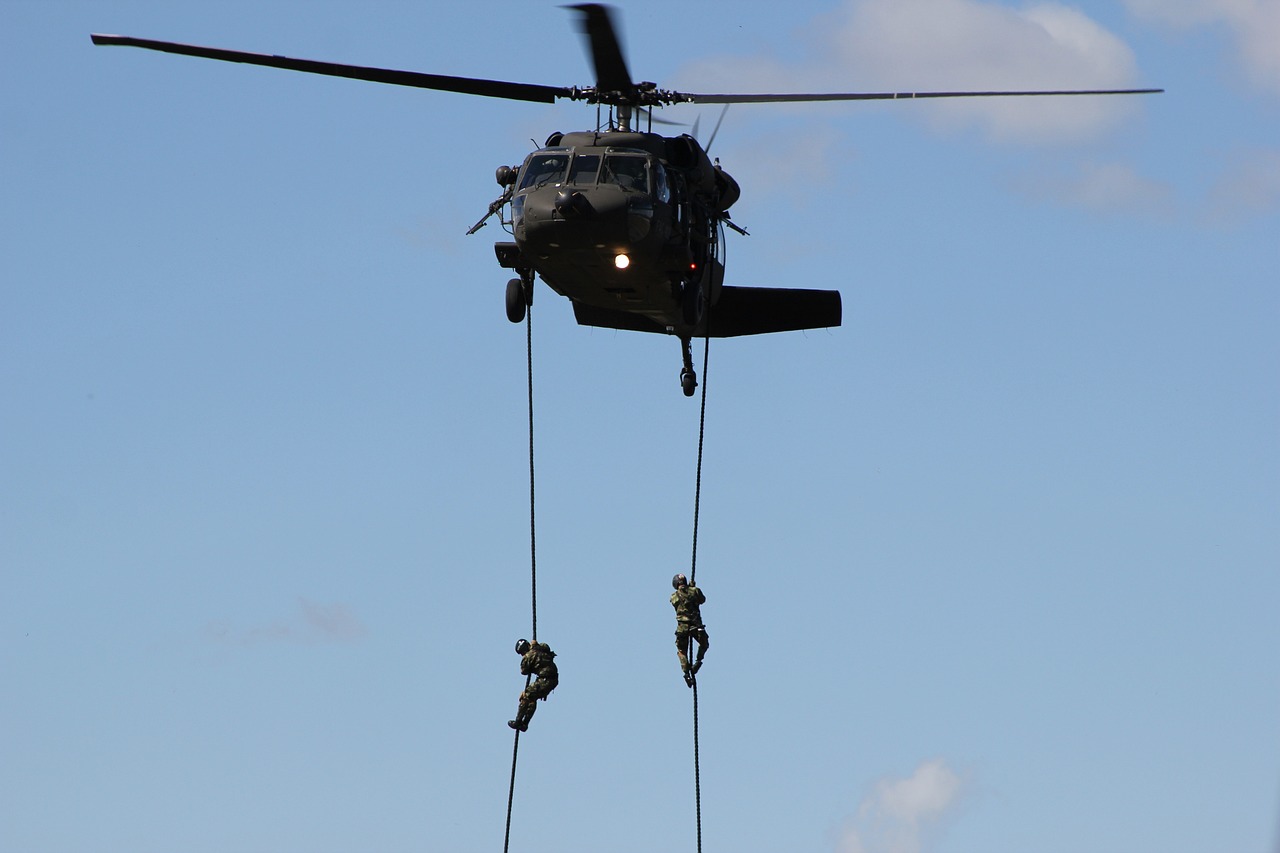
Potential Future Scenarios
As we stand on the brink of a new era in military technology, the potential scenarios that could unfold with the advancement of military robotics are both thrilling and daunting. Imagine a battlefield where robots, equipped with sophisticated artificial intelligence, work alongside human soldiers, making split-second decisions that could mean the difference between life and death. The integration of robotics into military operations is not merely a trend; it represents a fundamental shift in how wars might be fought in the future.
One scenario that experts often discuss is the concept of fully autonomous combat systems. These systems could operate independently, making real-time decisions based on the data they collect from their environment. While this might sound like something out of a science fiction movie, advancements in AI and machine learning are making this a tangible possibility. However, this raises significant ethical questions: who is accountable when a robot makes a mistake? The programmer? The military? Or should the robot itself bear some responsibility?
Another potential scenario involves the collaboration between human soldiers and robotic units. Picture a unit of soldiers working in tandem with drones and ground robots, sharing information and executing complex strategies that leverage the strengths of both humans and machines. This synergy could enhance operational efficiency, reduce casualties, and improve mission success rates. However, it also requires rigorous training and adaptation on the part of the soldiers, who must learn to trust and effectively communicate with their robotic counterparts.
The landscape of warfare could also see the rise of cyber warfare tactics that utilize military robots as tools for both offense and defense. Imagine drones that can not only gather intelligence but also launch cyber attacks against enemy systems. This dual capability would add a new layer of complexity to military strategies, as nations would need to defend against both physical and digital threats. The implications of this could be monumental, leading to a new arms race focused on technological superiority.
Moreover, as military robotics become more sophisticated, international relations may also be impacted significantly. Countries that invest heavily in these technologies could gain a strategic advantage, potentially leading to an imbalance of power. This could prompt other nations to accelerate their own military robotics programs, creating a cycle of competition and escalation. It’s a classic case of the security dilemma, where one nation’s efforts to secure itself could inadvertently threaten others, leading to heightened tensions and conflict.
In summary, the future of military robotics holds a plethora of potential scenarios that could reshape global security and warfare tactics. As we continue to innovate and integrate these technologies into our military frameworks, it’s crucial to consider the ethical implications and the need for international dialogue to ensure that advancements in military robotics contribute to peace rather than conflict.
- What are the ethical concerns surrounding military robotics?
The ethical concerns primarily revolve around accountability, decision-making in life-and-death situations, and the potential for autonomous systems to operate without human oversight. - How might military robotics change the nature of warfare?
Military robotics could lead to more efficient operations, reduced casualties, and new tactics that leverage the strengths of both human soldiers and machines. - What role will AI play in the future of military robotics?
AI is expected to enhance decision-making, adaptability, and efficiency in military operations, potentially leading to fully autonomous combat systems. - Could military robotics lead to an arms race?
Yes, as nations develop advanced military robotics, it could create a competitive environment, prompting others to enhance their own capabilities, leading to increased tensions.
Frequently Asked Questions
- What are military robots used for?
Military robots are primarily used for a variety of applications including reconnaissance, surveillance, logistics, bomb disposal, and even direct combat operations. They enhance operational efficiency and safety by performing tasks that are too dangerous for human soldiers.
- How have military robotics evolved over time?
The evolution of military robotics has seen significant technological milestones, from early remote-controlled devices to advanced unmanned aerial vehicles (UAVs) and ground robots. These advancements have transformed how militaries approach warfare and defense strategies.
- What are the advantages of using UAVs in military operations?
UAVs offer numerous benefits, such as reduced risk to human lives, increased operational range, and enhanced data collection capabilities. They can conduct missions that would be too risky for manned aircraft, providing critical intelligence without endangering pilots.
- What challenges do military robots face today?
Despite their advantages, military robots encounter several challenges, including regulatory issues, cybersecurity threats, and ethical concerns. These challenges complicate their deployment and raise questions about accountability in combat situations.
- What ethical considerations arise from the use of military robotics?
The use of military robotics raises significant ethical questions regarding accountability and decision-making. As robots become more autonomous, the potential for them to make life-and-death choices without human oversight becomes a pressing concern.
- How does artificial intelligence impact military robotics?
Artificial intelligence plays a crucial role in enhancing military robotics by improving decision-making, adaptability, and efficiency on the battlefield. AI can analyze vast amounts of data quickly, allowing robots to respond to dynamic combat situations effectively.
- What does the future hold for military robotics?
The future of military robotics is likely to involve further integration of AI, advancements in sensor technology, and new operational strategies. As these technologies develop, they will reshape global security and warfare tactics, potentially altering international relations.





